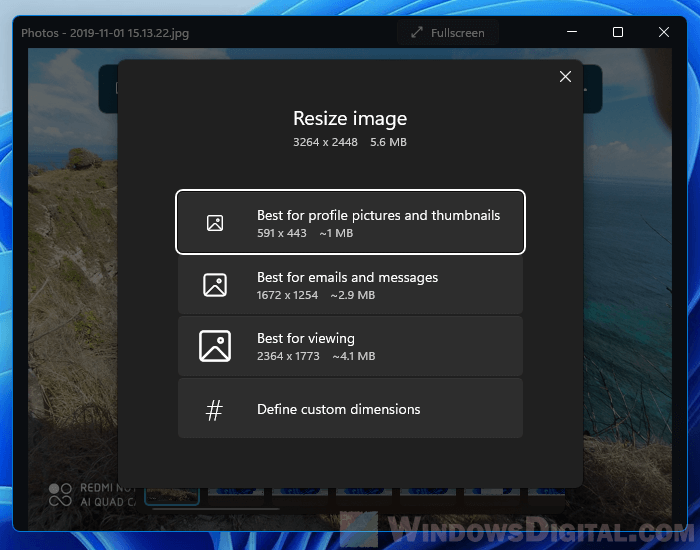
- HOW TO REDUCE A FILE SIZE ON AN LARGE DIMENSION IMAGE FULL
- HOW TO REDUCE A FILE SIZE ON AN LARGE DIMENSION IMAGE PRO
- HOW TO REDUCE A FILE SIZE ON AN LARGE DIMENSION IMAGE MAC
HOW TO REDUCE A FILE SIZE ON AN LARGE DIMENSION IMAGE MAC
ImageOptim is a Mac based only image compressor.These tools don't lose any quality, they only re-compress images and remove invisible metadata:

CompressPNG is a tool that allows to reduce the palette size to any value between 2 and 256 colors.
HOW TO REDUCE A FILE SIZE ON AN LARGE DIMENSION IMAGE FULL
pngquant is a command-line tool that can reduce large 24-bit PNG to small 8-bit PNG with full alpha transparency. You can often reduce size by 40-60% without noticeable loss in quality. ImageAlpha is a Mac tool that can reduce PNG files using pngquant, pngnq and posterization. Way2enjoy is another online tool that uses same lossy compression to reduce the size of PNG, JPEG & GIF images. TinyPNG is an online tool that uses lossy compression to reduce the file size of PNG images. Depending on the tool and the amount of compression used, the changes in quality may or may not be noticeable. These tools provide the greatest file size savings, but will reduce the quality of the file as a consequence. To learn more about ML Super Resolution and how we've built it, check out our comprehensive blog post.The following is a list of third-party compression tools that can be used to reduce the file size of a PNG file. You can achieve great results when upscaling images to even three times their original resolution. Unlike the regular scaling algorithms that interpolate the values of pixels mathematically, ML Super Resolution looks at the image itself, analyzing the patterns and textures in it, then recreates visually important details in larger dimensions. ML Super Resolution (available on macOS 10.14 and later) is a machine learning-powered scaling algorithm, trained to intelligently upscale images while preserving details that can often be lost when using traditional scaling. The Nearest Neighbor algorithm is mostly used for pixel art, as it copies the color of the nearest neighboring pixels resulting in the classic blocky image look. The Lanczos algorithm is designed to preserve small details when upscaling and downscaling, which is useful for things like graphics, though it's important to watch out for haloing issues. However, this can sometimes cause blurry images (especially when upscaling). It tries to naturally smooth edges (transitions between light and dark colors) by guessing the intermediate colors, so it's useful for photographic images. The Bilinear algorithm is more or less the standard in image editing. In Pixelmator Pro, you can resize images using one of four scaling algorithms: Bilinear, Lanczos, Nearest Neighbor, and ML Super Resolution. For web graphics and images, a resolution of 72 PPI is often used as the default, although this is essentially placeholder text as web images should always be sized in pixels. The standard resolution for high-quality prints is 300 pixels/inch (PPI), although a lower resolution is often used for larger posters and other media that is viewed from a distance where it would be difficult to see individual pixels. Note that because you'll be changing the physical size of the image, pixels as measurement units will be grayed out. This way, changing the resolution will automatically change the print dimensions and vice versa, ensuring the pixel size of the image stays the same. Note: If you’d like to change the print dimensions of an image without changing the quality of the image (or its pixel dimensions), deselect the Resample checkbox. 
So, if you have a 10x10 inch image at 300 PPI, its pixel size would be 3000x3000. The basic formula for this is Print Size x Resolution = Pixel Dimensions.
HOW TO REDUCE A FILE SIZE ON AN LARGE DIMENSION IMAGE PRO
When you change the print dimensions of an image, you’re essentially changing its pixel dimensions indirectly by letting Pixelmator Pro calculate the size for you. Note: If you’d like to resize the image without keeping its original proportions, deselect Scale proportionally.

Choose a print unit (inches, cm, mm, or points) from the Unit pop-up menu.Įnter a new width and height for the image or use text field math to calculate it. Press Option ⌥ + Command ⌘ + I on your keyboard. Choose Image > Image Size (from the Image menu at the top of your screen).







 0 kommentar(er)
0 kommentar(er)
